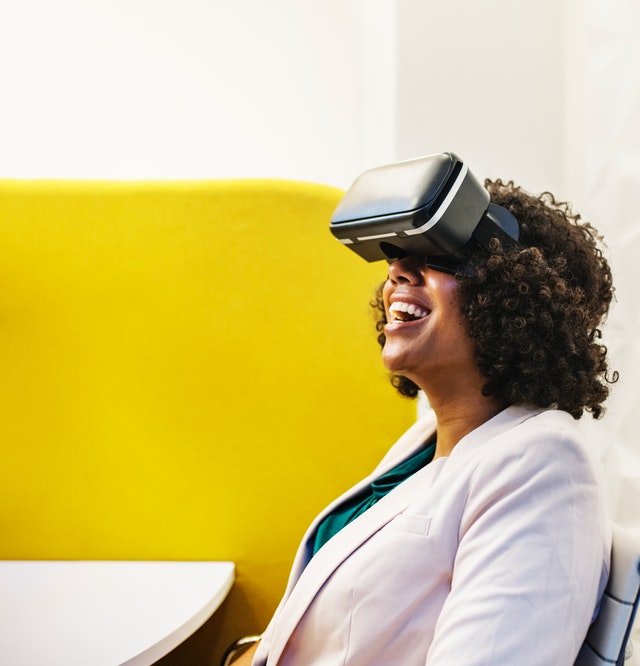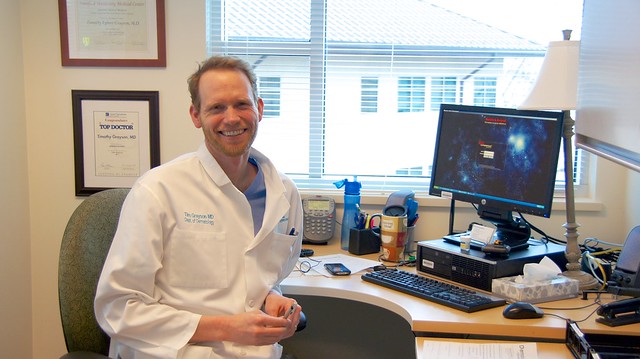Every day, there are more bridges uniting two worlds so full of trends: technology, especially in the field of information technology, and medicine. One of the great contributions of information technology to medicine is that now doctors can carry out operations much more effectively and with lower costs, running fewer and fewer risks than they used to in previous times. This is known as ‘augmented reality.’
Augmented Reality (AR) is a technology that allows superimposing virtual elements on our natural perception of reality. Although the idea appeared in the nineties (a Boeing employee thought that workers lost a lot of time reading manual instructions) only a couple of decades later a video game was created, and it actually revolutionized the world of technology: Pokémon Go. This game consisted of going out there (at your home, your neighborhood, and your city) hunting pokémons thanks your smartphone camera and a GPS locator: you pointed to any place, and, on the screen, you had a map, a radar, and, every time you found one, you could capture the Pokémon you were looking for in your inventory. Then this idea sparked the creativity of thousands of developers, and, since 2016, this technology has gained a lot of ground. It has already reached the medical territory, by the way.

Nowadays, there are several fields of medicine in which augmented reality has been introduced. On the one hand, the visualization of clinical data. In this case, what is sought is to visualize clinical data quickly and completely when using certain devices. For example, while carrying out a tomography or a colonoscopy, the doctor can learn more about the patient on a screen while still observing the patient’s body. The type of blood, allergies, cancerous cells, a malignant tumor, a colony of bacteria, etc., everything would appear in front of your eyes while using the device that allows you to carry out the procedure. This allows doctors to take decisive actions faster and identifying problems much earlier.
Read also: Telehealth: a new medical revolution?, by Sudir Raju
Augmented reality is one of those phenomena in which the tremendous capacity of machines (including, of course, software) gives a hand to the intelligence and ability of doctors. In recent decades, the fear that smart machines take over human works has grown a lot, fueled by science fiction. In reality, as this article says, things are not that creepy, nor will they; and augmented reality is an example of that.
Augmented reality in medicine can go far beyond the mere visualization of clinical data. It may be a fundamental tool for surgeries in the future. Thanks to this technology, a doctor has vital information about the patient during the procedure, which will even allow him/her to choose one or another way to proceed. But, in the same way, it allows the surgeon to know the exact position of the anomalies to be solved (for example, a tumor, the remains of a bullet, an aneurysm, etc.). It eases the procedure since it saves vital time for the medical team, as well as resources and energy, and allow surgeries to be less traumatic for patients (especially recovery.)
This technology opens a plethora of doors. An operation may be streamed live so that other doctors (or students) can learn and even participate. Similarly, textbooks and software for medical students could include three-dimensional images for learning in a much more practical and playful way. Moreover, it is now possible to build models identical to human bodies to perform Virtual Reality simulations, so that a student can later perform a real operation with the same software while using Augmented Reality devices in real patients.
Moreover, when telemedicine is mixed with augmented reality, some possibilities (unthinkable before) now become real. A surgeon could operate a patient remotely, regardless of whether the first one is in the heart of Alaska, and, the other, in Madagascar, as long as there is a good internet connection. With an augmented reality system, many clinical devices could be available in one, so that you can have a microscopic view, cut, remove, and suture. In general, augmented reality will go hand in hand with telemedicine, because of all preventive procedures, all medical check-ups (or, at least, most of them), could be carried out in a remote and more effective way. What’s more, during a revision procedure, a doctor could quickly and accurately detect if a potentially dangerous anomaly exists. For example, during a CT scan of the kidneys, you might find out if there is a complicated liver injury.
This includes, of course, physiotherapy. For the proper muscle recovery of a patient, the doctor can monitor the patient’s muscles, bones, and tendons while instructing what exercises to perform. In this way, the therapist could even see how a patient’s blood pressure behaves while observing it; and if you need to take x-rays to make comparisons with earlier stages of recovery, you could do so by other methods than the traditional x-rays.
It is a good time to be alive!







